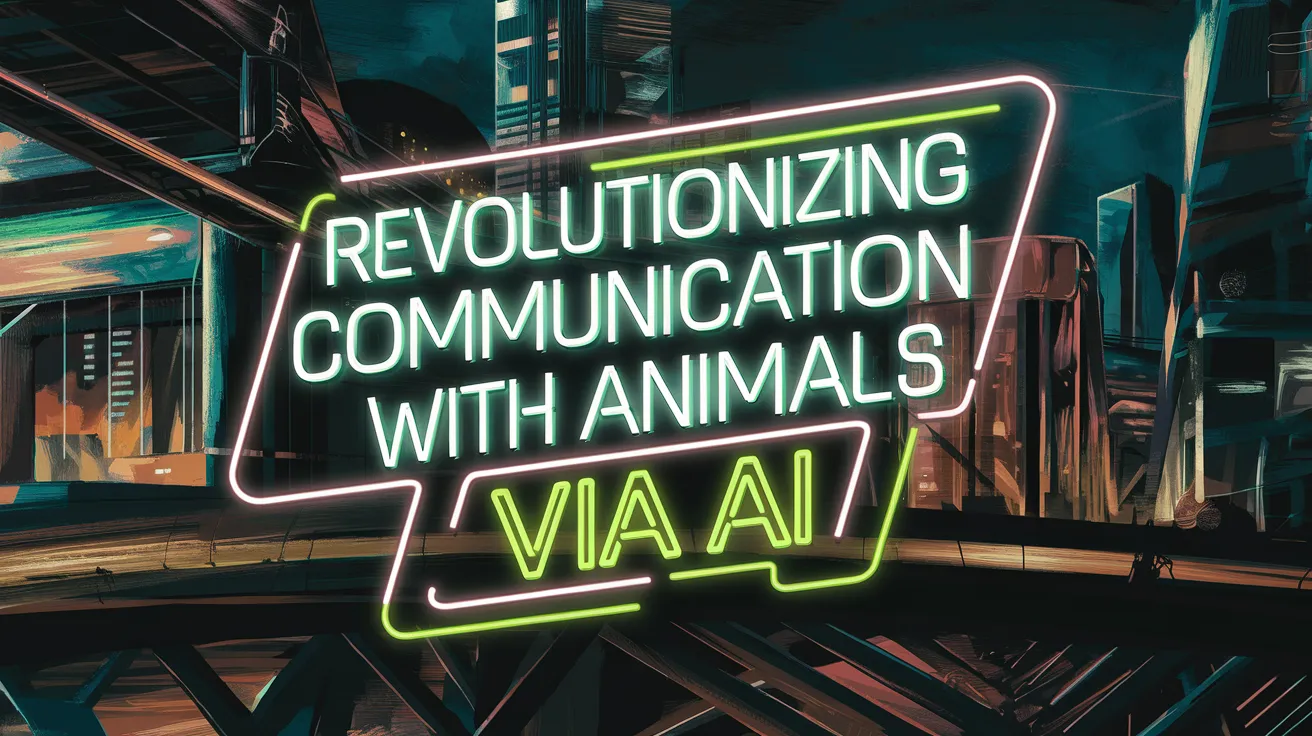Revolutionizing Communication With Animals via AI

Recent advancements in artificial intelligence (AI) may enable humanity to achieve, for the first time, direct translation from animal communication to human language and back. Scientists are not only theorizing about this possibility; they are actively developing mechanisms for two-way communication with various animals. If successful, such innovations could have profound implications for animal rights, conservation efforts, and our understanding of animal sentience.
Historically, interspecies communication has manifested in limited ways. Humans have communicated with dogs for millennia during domestication, teaching them commands and enabling them to express their needs, such as signaling when they need to go outside. Unique cases include Koko the Gorilla, who learned sign language, and Grey parrots, capable of mimicking human speech to an advanced degree. However, establishing two-way communication generally requires significant time and effort, and is often confined to specific individuals rather than broader species interactions.
With recent progress in AI, a crucial question emerges: could AI potentially facilitate communication with a wider array of animal species? The heart of modern AI relies on machine learning, software adept at discerning patterns within data. This principle of recognizing useful patterns also applies to understanding animal communications, whether they be vocal sounds, visual signals, or pheromonal interactions.
The rise of AI in animal communication research involves detecting audio and visual data patterns, enabling identification of various states—such as happiness or distress—through animal vocalizations. Researchers are even tackling the ambitious goal of translating between human and animal languages based on linguistic structures. Achieving this aim could revolutionize interspecies communication capabilities.
Innovative technologies, like portable digital bioacoustic recorders, are proving invaluable in gathering substantial data about animal sounds. Scientists are deploying these devices in diverse environments, from the Arctic to the Amazon, to continuously record animal communications. This data is then used to train sophisticated AI systems to help decipher the intricacies of animal vocalizations.
The Earth Species Project, a non-profit organization dedicated to decoding non-human communication, is among those making strides in this field. Through initiatives like the Crow Vocal Repertoire project and their Benchmark of Animal Sounds, they are laying the groundwork for potential two-way communication. Other research focuses on understanding the communication mechanisms of squirrel, whale, and bee populations, all of which contribute valuable insights into animal languages.
However, challenges persist. Neuroscientist Kevin Coffey advises caution, emphasizing that while AI tools promise significant insights, they do not automatically translate animal sounds into human language. The critical groundwork necessitates detailed observational studies to connect animal vocalizations with specific behaviors and emotions.
The implications of successful AI-driven animal communication extend to animal rights and welfare. Increased understanding of animal languages could spur legal reforms surrounding animal treatment and agriculture. For example, if chickens could articulate distress regarding living conditions, this might prompt changes in farming practices.
Furthermore, understanding animal communications might cultivate empathy towards non-human species among humans. Research indicates that perspective-taking can foster empathy; thus, being able to share a language with animals might similarly enhance emotional connections.
Yet, ethical considerations loom large in these advancements. As some researchers caution, animals may not communicate in ways that easily translate to human language. The risk exists that these technologies could be misused, particularly in industries like factory farming or commercial fishing, where profit motives could overshadow ethical considerations. Such scenarios underline the need for responsibly harnessing this groundbreaking technology.
Despite the hurdles, the continued evolution of AI presents a tantalizing possibility: if we can unlock the code of two-way communication with animals, the impact on our relationships and responsibilities towards them could be transformative.